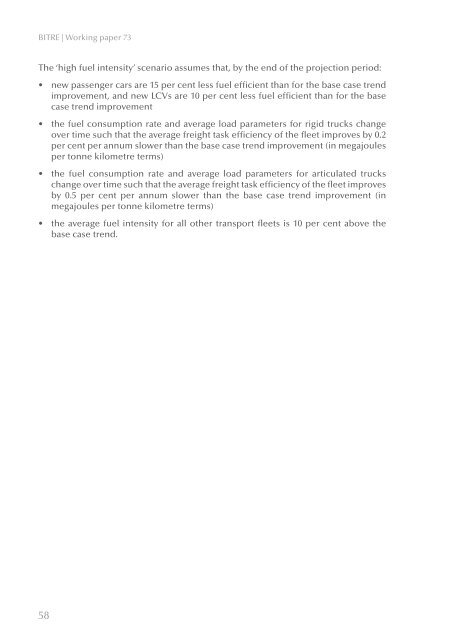PDF: 9795 KB - Bureau of Infrastructure, Transport and Regional ...
PDF: 9795 KB - Bureau of Infrastructure, Transport and Regional ...
PDF: 9795 KB - Bureau of Infrastructure, Transport and Regional ...
You also want an ePaper? Increase the reach of your titles
YUMPU automatically turns print PDFs into web optimized ePapers that Google loves.
BITRE | Working paper 73<br />
The ‘high fuel intensity’ scenario assumes that, by the end <strong>of</strong> the projection period:<br />
• new passenger cars are 15 per cent less fuel efficient than for the base case trend<br />
improvement, <strong>and</strong> new LCVs are 10 per cent less fuel efficient than for the base<br />
case trend improvement<br />
• the fuel consumption rate <strong>and</strong> average load parameters for rigid trucks change<br />
over time such that the average freight task efficiency <strong>of</strong> the fleet improves by 0.2<br />
per cent per annum slower than the base case trend improvement (in megajoules<br />
per tonne kilometre terms)<br />
• the fuel consumption rate <strong>and</strong> average load parameters for articulated trucks<br />
change over time such that the average freight task efficiency <strong>of</strong> the fleet improves<br />
by 0.5 per cent per annum slower than the base case trend improvement (in<br />
megajoules per tonne kilometre terms)<br />
• the average fuel intensity for all other transport fleets is 10 per cent above the<br />
base case trend.<br />
58

















